
LifeMoves Mountain View Solar Microgrid is Staged for Construction
The Clean Coalition recently produced a study showcasing both resilience and electricity bill savings for a transitional housing site.
LifeMoves Mountain View Solar Microgrid is Staged for Construction
In partnership with the LifeMoves organization, the Clean Coalition produced a study for transitional housing showcasing that Solar Microgrids provide both critical resilience and substantial electricity bill savings.
With the increasing frequency of disasters, awareness is growing quickly that energy resilience is vital for communities everywhere. The benefits of Solar Microgrids are also on full display, and at the very least, Solar Microgrids should be deployed at Critical Community Facilities (CCFs) to ensure unparalleled resilience for essential services during grid outages of any duration – along with delivering overall economic and environmental benefits.
The Clean Coalition recently completed a Solar Microgrid design for a LifeMoves transitional housing facility in Mountain View, California. The Clean Coalition applied its standardized Solar Microgrid Methodology to the effort, which reinforces the fact that Solar Microgrids can be deployed almost everywhere.
By showcasing the feasibility of these projects, and the vast potential for siting distributed energy resources in the built environment, we help proliferate clean local energy and community resilience. The Clean Coalition bases its work on concrete project experience – and helps to innovate policies that often impede these projects.
The specific results and recommendations in this study will enable the LifeMoves organization to proceed with construction of the Solar Microgrid at their facility in Mountain View, delivering these two significant benefits:
- Providing critical resilience – keeping essential services such refrigeration, radio security, and internet access active during grid outages of any duration.
- Improving the LifeMoves budget – providing over $1 million in bill savings on the site’s electricity bills, and resulting in total projected value of over $1.5 million when including value-of-resilience, based on the Clean Coalition’s VOR methodology (“VOR123”).
The Clean Coalition’s Solar Microgrid analyses for the Mountain View site has been incorporated into an Invitation for Bid (IFB) process that should release by early-2023. This is a competitive method of awarding government contracts and is used for procurements in which the agency knows exactly what it needs in the contract, as well as when and how the products and services are to be delivered. The Clean Coalition’s deliverables enabled the IFB process and should achieve a superior outcome for LifeMoves. The Clean Coalition is helping to accelerate the IFB process such that the LifeMoves Mountain View Solar Microgrid can be grandfathered into the Net Energy Metering 2 (NEM2) rules, which are considerably more favorable than the pending NEM3 rules.
The remainder of this piece goes into the details of the LifeMoves Mountain View Solar Microgrid feasibility study process and important results.

The LifeMoves organization works to end homelessness in communities by building Interim Supportive Housing with cost-effective and scalable solutions. LifeMoves has over 26 modern shelter sites in the south San Francisco Bay Area, providing housing and services so that neighbors who are experiencing homelessness have a temporary place to call home while receiving intensive, customized social services and case management. LifeMoves serves a diverse client population including veterans, families, single adults, the LGBTQ+ community, aging seniors, and more, covering people of all colors and backgrounds. They have successfully returned over 2,000 clients to stable housing each year. And with this project, LifeMoves can deliver ongoing essential services to those in need.
The LifeMoves project is based on the Clean Coalition’s established Solar Microgrid design and optimization methodology that features energy resilience for essential services. The resilience goal is to enable indefinite operations of the most critical loads, while keeping all loads operational for a significant percentage of time. This resilience would be provided when the grid is down for any reason, including from Public Safety Power Shutoff (PSPS) events, and more importantly, from actual disasters that require weeks or longer to restore grid service. The Solar Microgrids will also reduce the LifeMoves energy costs, and as a model that can apply to all locations.
The scope and deliverables for the Solar Microgrid project at the LifeMoves Mountain View facility were as follows:
- Optimize the DER mix to:
- Achieve net zero energy.
- Maintain Tier 1 (critical) loads during grid outages and potentially indefinitely.
- Support Tier 2 (priority) loads as much as possible during grid outages, and whenever energy is plentiful, support Tier 3 (discretionary) loads too.
- Preempt the use of diesel and any other fossil fuels for resilience.
- Maximize economic benefits.
- Assess and evaluate Solar Microgrid ownership & financing options, including cash purchase and Power Purchase Agreement (PPA) options.
- Key deliverable: Presentations including the technical & economic analysis and recommendations.
The Clean Coalition conducted this study by utilizing its proven methodology for analyzing energy resource and resilience solutions on behalf of communities, featuring the following five steps:
- Step 1: Load Profiles: Develop profiles for existing electricity loads over a relevant 12 month period and then adjust for expected changes due to anticipated EV charging, electrification of heating applications and other appliances, and new construction. Also develop profiles for critical loads that need to be maintained for limited periods of time – and critical loads that need to be maintained indefinitely, regardless of grid outage durations.
- Step 2: Resource Scenarios: Investigate all possible onsite energy resource options that are technically viable for each site while optimizing the economic, environmental, and resilience objectives.
- Step 3: Site Layouts: Develop the site layouts to clearly illustrate recommended locations and sizing for all generation resources, locations for energy storage, and to detail locations of key electrical assets like the customer meter and critical loads.
- Step 4: Economic Analyses: Analyze the total costs and economic benefits of each of the viable Resource Scenarios at each site.
- Step 5: Reporting & Recommendations: Present the results and recommendations via project review meetings, presentations, and reports.
These five steps are diagrammed below:
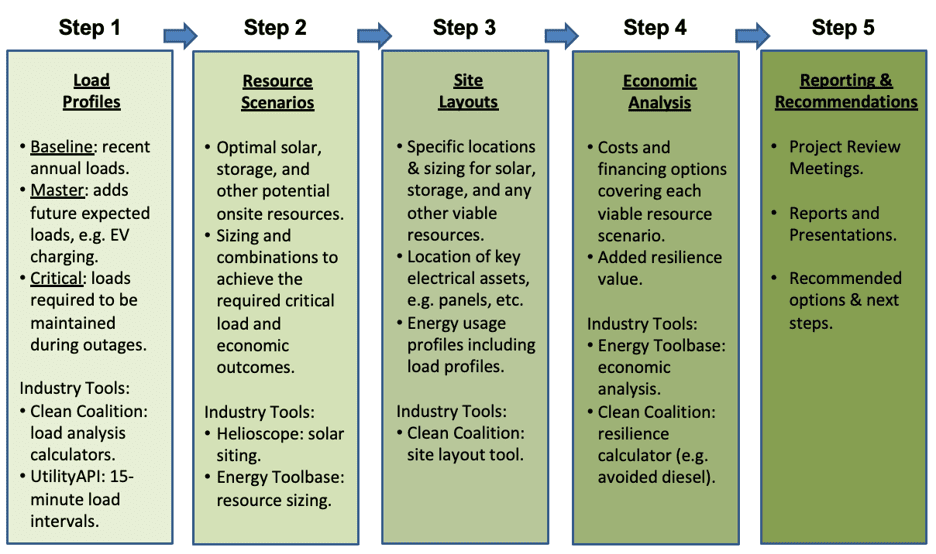
Project Results
Load Profiles
Following is the LifeMoves Mountain View Baseline Load Profile. The Baseline Load Profile was calculated using existing loads at the site; however, due to the site being fully operational starting in July 2021, in order to more accurately represent full occupancy over a twelve-month period the month of April 2022 was used to fill in for May and June 2021, and the month of September was used to more accurately represent July and August.
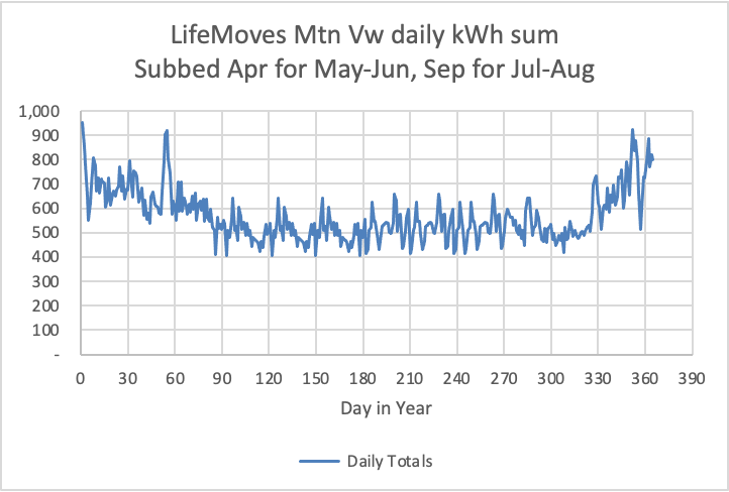
An Electrical Vehicle charging profile was added to the Baseline Load Profile to calculate the Master Load Profile. The site has two existing level-2 charging ports, and the resulting profile was modeled for typical usage 5+ years out using an employee + public EV charging load profile.
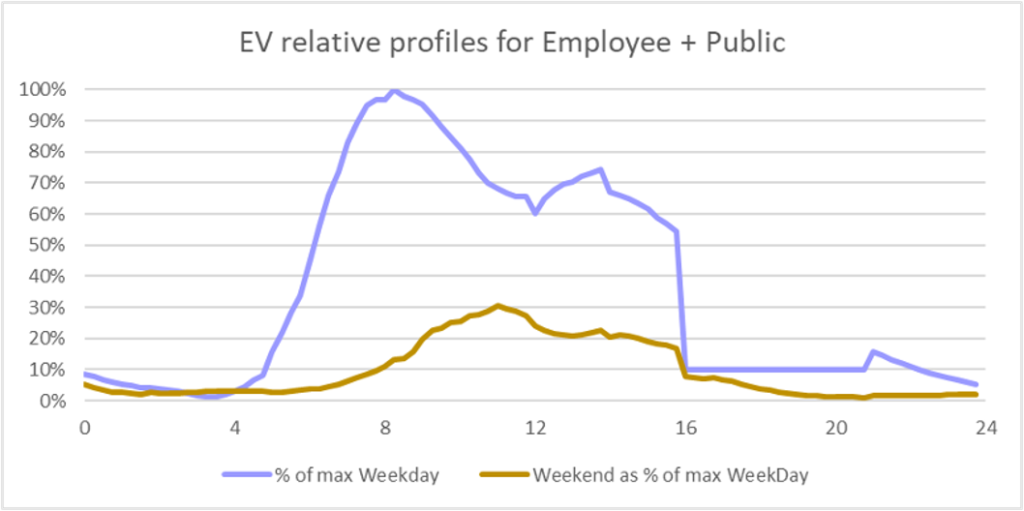
The following chart shows the resulting Master Load Profile which equals the Baseline Load Profile plus the EV charging profile. Below the chart is the table showing each load profile’s total load and annual bill amount based on the appropriate rate schedule.
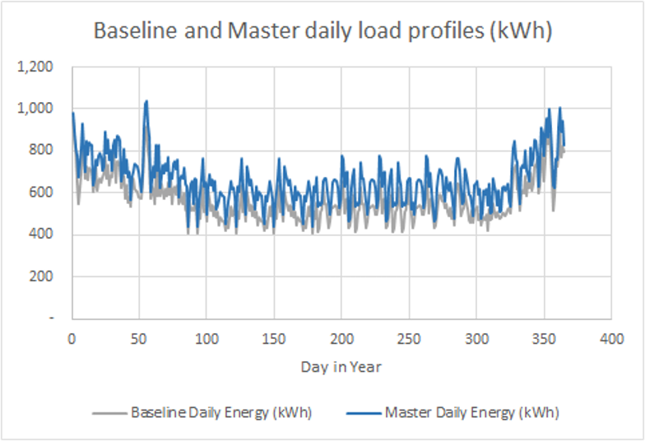

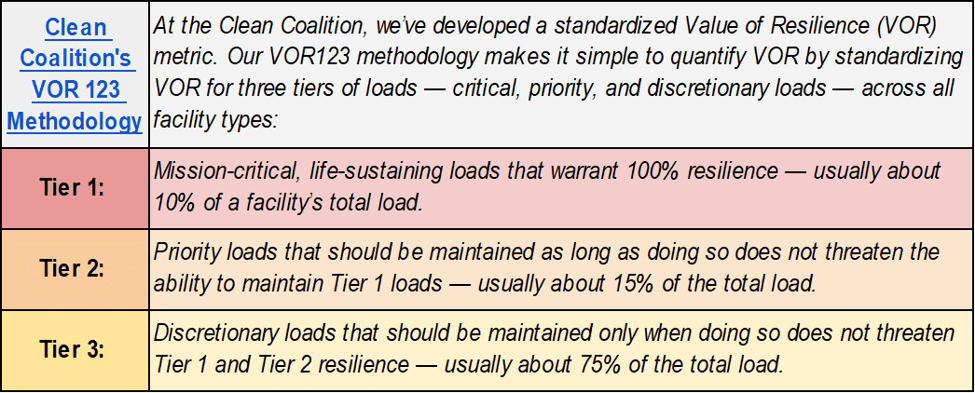
The LifeMoves Mountain View Critical Load Profile was determined via a process that enabled the LifeMoves team to review all loads at the site and determine which loads fall into the three Tiers as defined above. Through this process the LifeMoves Mountain View site includes the following as critical loads: food and community services, bathrooms, restrooms, security lighting, exterior lights, office lights, reception lights, parking lot lights. Following is the required critical load tiering percentages as determined for the LifeMoves Mountain View site:

The detailed circuit flow diagram designed for the LifeMoves Mountain View site to operationalize the required resilience is provided below, keeping all Tier1 loads on indefinitely during an outage, and with the Tier 2 loads supported as well for a substantial amount of time.
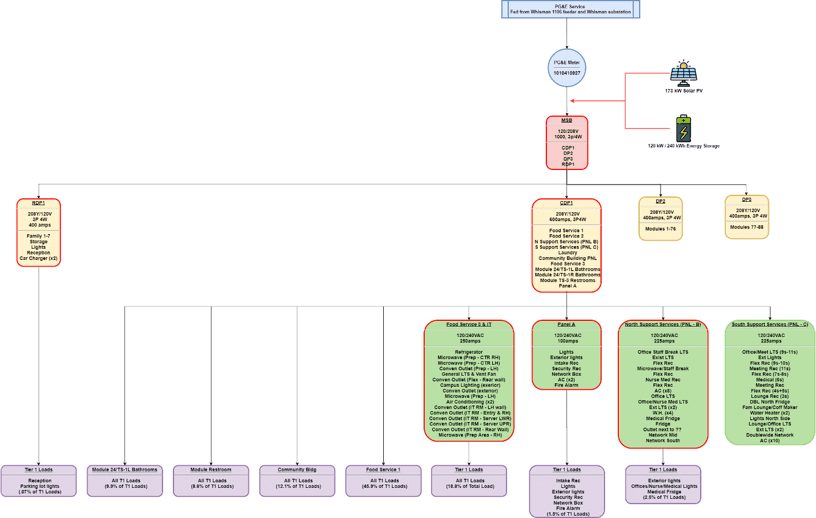 Resource Scenario and Site Layout
Resource Scenario and Site Layout
The following site layout and accompanying Solar Microgrid profile data provides the resource scenario that is appropriate for the LifeMoves Mountain View site and that satisfies the project’s clean energy, resilience, and cost savings goals. Note that this site includes both rooftop and parking canopy solar in the design:
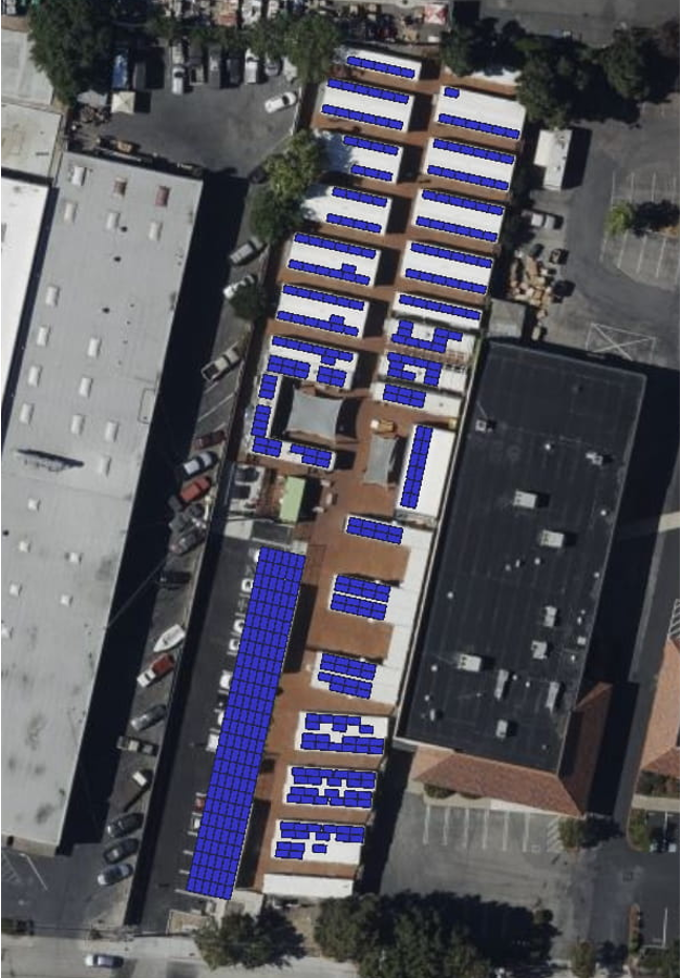

Based on the system design, the table below provides the solar cost:
The following table provides the energy storage system sizing and costs, and including the required indefinite resilience. The sizing and cost is based on using Tesla Powerwalls for the site – so 18 Powerwalls equaling the required 90 kW in power capacity and 238 kWh in energy capacity:

Economic Analysis
The Clean Coalition’s economic analysis of the Solar Microgrid for the LifeMoves Mountain View site resulted in a net savings of over $1M for LifeMoves over a 25-year period, and based on LifeMoves expecting to use external funds to cover the upfront cost. The 25 Year Solar Microgrid cash purchase key economic analysis is provided below, and including the estimated Value of Resilience this solution will provide to the Mountain View site:
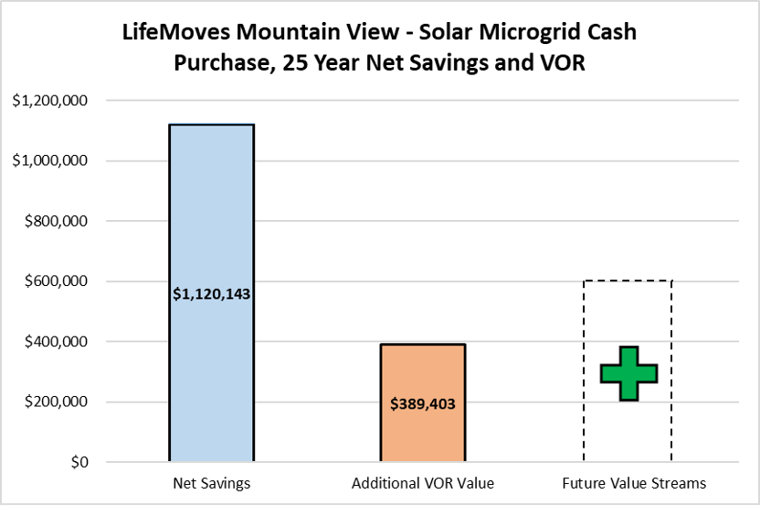
The above economic analysis demonstrates that LifeMoves and other transitional housing sites can save substantial costs in utility bills by deploying these Solar Microgrid systems, while also benefiting from the Value of Resilience (VOR) that these solutions provide – typically valued as a 25% adder to the total utility bill and estimated here as an additional benefit well over $300,000. Thus, the LifeMoves organization can achieve over $1.5M in economic value for this and many other transitional housing locations.
This feasibility study completed for LifeMoves achieved the goal of providing a solution for transitional housing that delivers the unparalleled trifecta of clean energy, resilience for critical loads, and significant cost savings. These benefits will apply to all transitional housing sites that utilize this Solar Microgrid design.
As mentioned above, based on the Clean Coalition’s analysis for a Solar Microgrid at the Mountain View Site, LifeMoves is now moving forward with an Invitation for Bid (IFB) process. This is a competitive method of awarding government contracts and is used for procurements in which the agency knows exactly what and how many of everything it needs in the contract, as well as when and how the products and services are to be delivered. The Clean Coalition is helping to facilitate the timing of the IFB process such that the LifeMoves Mountain View Solar Microgrid can be grandfathered into the Net Energy Metering 2 (NEM2) rules, which are considerably more favorable than the NEM3 rules that might be approved by the CPUC on 15 December and apply on all projects that do not have approved interconnection applications before tax day in mid-April.
The combination of the Clean Coalition’s technical and site design details with the IFB process will deliver the best outcome for the LifeMoves organization while establishing a replicable model for all transitional housing locations – demonstrating yet again that Solar Microgrids deliver an unparalleled trifecta of clean energy, critical resilience, and significant cost savings.
The Clean Coalition also completed a Solar Microgrid feasibility study for another LifeMoves site planned for Palo Alto, CA. This project demonstrated the same substantial clean energy, resilience, and cost savings benefits – providing the transitional housing planned for this site with Net Zero Energy, indefinite resilience for all mission-critical Tier 1 loads with substantial support for Tier 2 priority loads, and over $1.6 million in net utility bill savings utilizing external funds for the upfront cost. The result of both the Mountain View and Palo Alto economic analysis is a total of over $2.7 million in savings for the LifeMoves organization.




